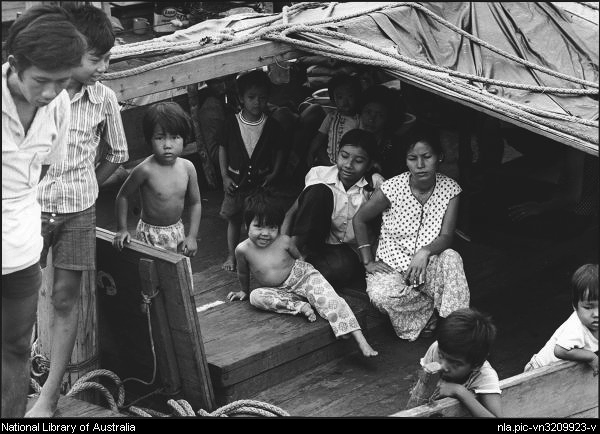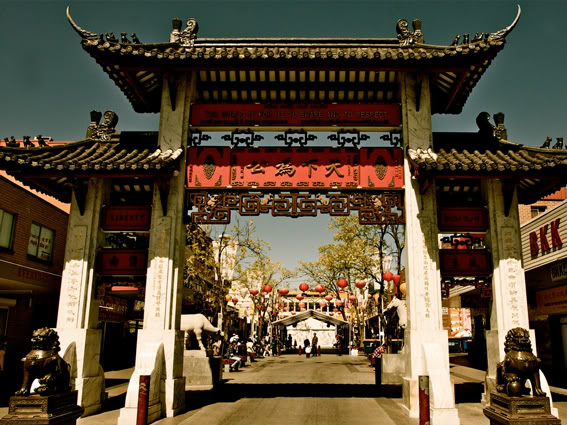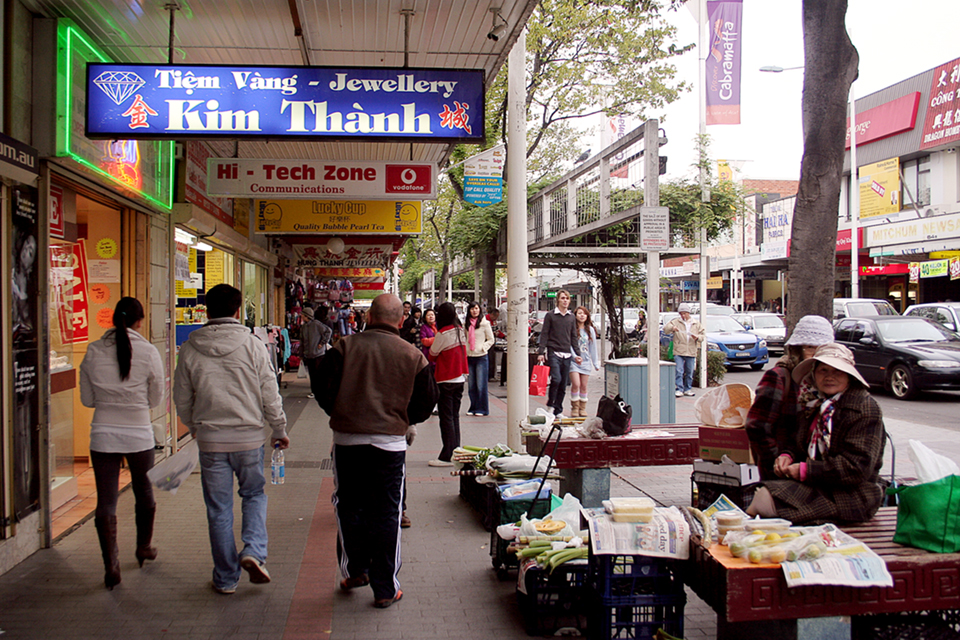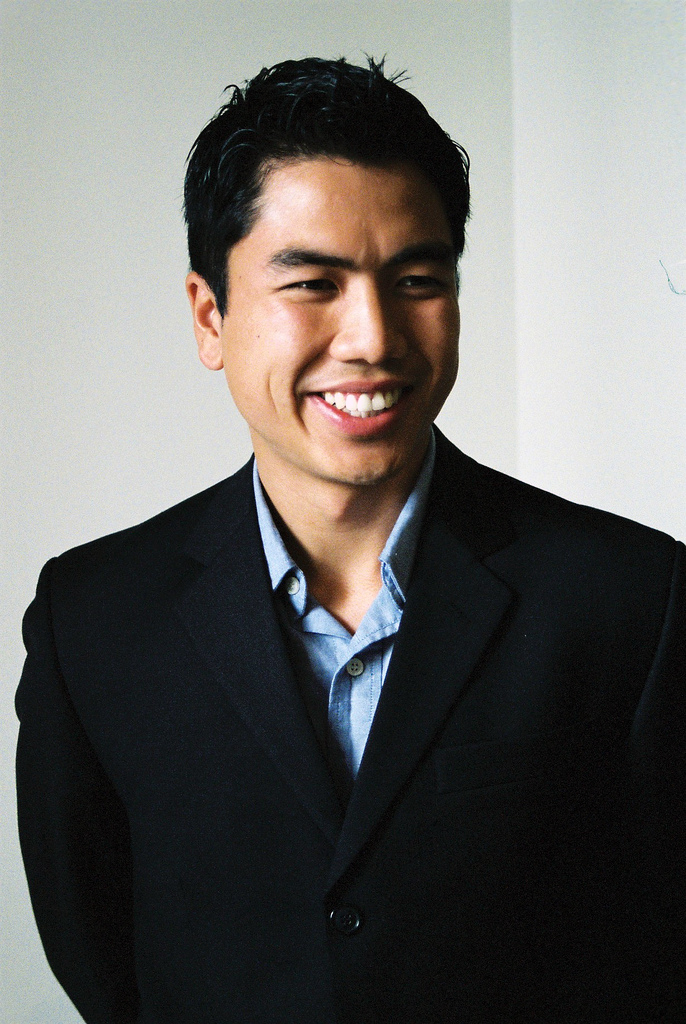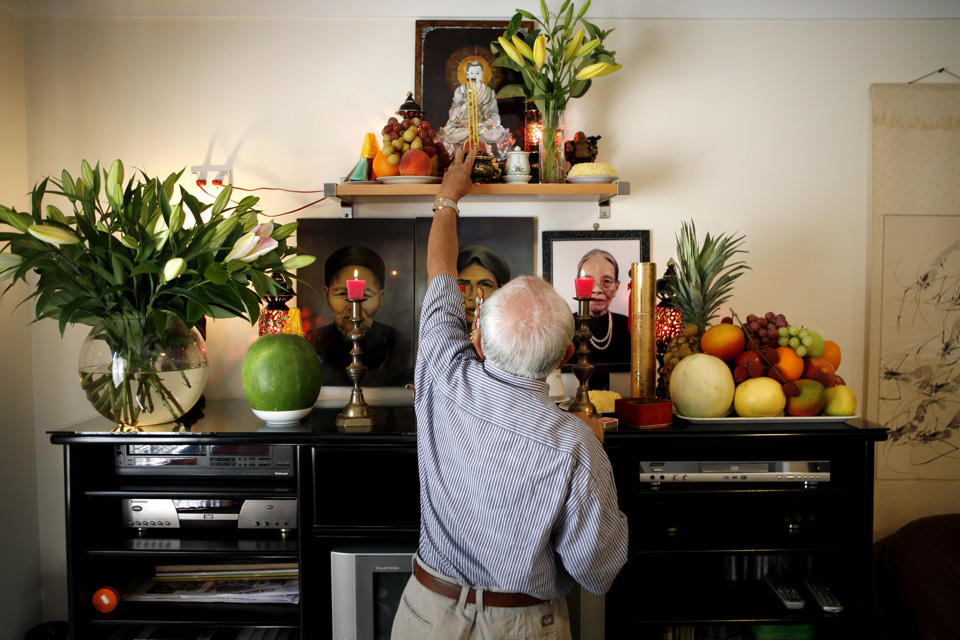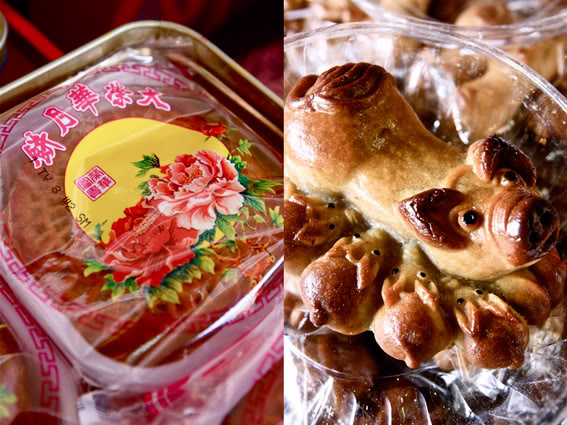The Dictionary of Sydney was archived in 2021.
Vietnamese
Citation
Persistent URL for this entry
To cite this entry in text
To cite this entry in a Wikipedia footnote citation
To cite this entry as a Wikipedia External link
Vietnamese
[media]Australians of Vietnamese origin form one of the largest and most visible migrant communities in Sydney. Vietnamese is the fifth most commonly spoken community language in Sydney other than English, and ranks above Italian. Arriving as refugees and family reunion migrants in the wake of the fall of Saigon to advancing communist forces in 1975, the Vietnamese were the first large group of Asian immigrants to settle in Australia after the end of the White Australia policy, and the first significant group to arrive after the advent of official multiculturalism.
After gaining initial sympathy for their plight as refugees, the Vietnamese became the focus for traditional Anglo-Australian fears about an 'Asian invasion'. These fears were exacerbated when Vietnamese immigrants began to settle in relatively concentrated groups in areas around Fairfield, Bankstown and Marrickville – the result of an urge to cluster that was due, on the one hand, to experiences of racism and social exclusion in Australia, and on the other, to the desire to be close to compatriots and to rebuild a sense of community. Today Vietnamese Australians in Sydney enjoy a rich community life centred on the bustling culinary and commercial centre of Cabramatta, and have gained greater recognition and acceptance in the eyes of other Australians.
Vietnamese migration
The symbolic date of the foundation of the Australian chapter of the Vietnamese diaspora is 1975, the year Saigon fell. In fact, before that date, there were already around 500 Vietnamese in Australia, mostly Colombo Plan students, and Vietnamese refugees did not begin to arrive in Australia in their thousands until 1978, when 5,400 were settled. Arrivals continued strongly through the early 1980s, with 12,915 people arriving in 1980, the second largest intake for any year. This surge coincided with the nationalisation of the South Vietnamese economy, which occurred four years after the political reunification of Vietnam, and impacted particularly heavily on the ethnic Chinese Vietnamese, who controlled much of the southern economy. As a result, those of Chinese ancestry are well represented in the Vietnamese community in Australia, and many of the shops in Vietnamese community centres in Sydney are owned by ethnic Chinese Vietnamese who arrived with experience in small business. [media]The influence of this Chinese business community is reflected in the prominent Chinese characters inscribed on the Pai Lau gate that stands over the entrance to Cabramatta's Freedom Plaza.
Vietnamese refugees and family reunion migrants continued to arrive in Australia at an average of over 8,500 a year until 1995. The year 1990 saw another peak as a result of the liberalisation of travel restrictions and other reforms in Vietnam, as well as impending changes to international agreements on how Vietnamese refugee arrivals were to be categorised and processed in countries of first asylum. Many of these later arrivals were northern Vietnamese of peasant origins, sometimes disparagingly called 'economic refugees' by southerners already settled in Australia who saw themselves as political refugees. In 1996 arrivals dropped to under 4,000 as a result of a reduction in the family reunion intake by the newly elected conservative Howard government. Numbers then fell again in 2000 to 1,500, as quotas were almost entirely slashed.
Today, Vietnamese migration to Australia has entered a post-refugee phase in which the new immigrants and sojourners are students, brides and migrant workers. In 2006–07 there were 3,135 settler arrivals, the great majority of whom were women on prospective spouse visas who had come to marry Vietnamese Australian men. In the same period there were 6,481 students and 1,081 holders of the new 457 work visa. Vietnamese were in the top ten settler arrivals in Australia in 2006–07.
Vietnamese areas in Sydney
Sydney is host to Australia's largest Vietnamese community. The 2006 census showed 72,615 Vietnamese speakers residing in Sydney, or 1.8 per cent of the city's population (out of a national population of 173,663 people of Vietnamese ancestry). [media]The local government areas with the highest numbers of Vietnamese speakers resident include Fairfield, Bankstown, Liverpool and Canterbury.
Sydney local government areas with highest numbers of Vietnamese Australians, 2006 Census
| Local government area | Vietnamese ancestry | Speak Vietnamese at home | % of speakers of all languages in area |
| Fairfield | 25, 158 | 30, 666 | 17 % |
| Bankstown | 12, 349 | 14, 093 | 8.3 % |
| Liverpool | 5, 888 | 6, 676 | 4 % |
| Canterbury | 4, 236 | 4, 980 | 3.8 % |
(Source: Australian Bureau of Statistics 2006 census tables for 'Ancestry' [full classification list] by Sex, Sydney Statistical Division; 2006 census tables for 'Language Spoken at Home' [full classification list] by Sex)
Cabramatta
One of the reasons for the presence of Vietnamese Australians in the Fairfield local government area is the fact that most arrivals were initially housed in hostels in the area, the biggest of which was the Cabramatta Migrant Hostel. Cabramatta has a history as a migrant 'transition zone', and has hosted a succession of post-World War II arrivals, including British, German, Greek, Italian and Yugoslav migrants. The Vietnamese, like their predecessors, were channeled into Cabramatta in the resettlement process. Many of those who had initially settled elsewhere in Australia, including some who had been placed with sponsors in regional areas, undertook a secondary migration to the Fairfield area to join the nascent community. In addition to the attraction of having Vietnamese neighbours, groceries and restaurants, the area was appealing in that land and houses were relatively cheap and it was close to work in western Sydney's manufacturing sector, where most Vietnamese refugee and migrant arrivals found their first jobs.
This settlement pattern became the source of much fear-mongering in the media, and many claimed a Vietnamese ghetto was taking shape in Cabramatta. Academics were divided as to what was in fact occurring in the suburb, and a lively debate ensued. Some supported the claim that Cabramatta did indeed show the characteristics of a 'ghetto', in that it was a site of high unemployment and entrenched social disadvantage and criminality. Its apparent commercial bustle was declared misleading and the Cabramatta economy was dismissed as a 'high competition/low profit' one. Some argued that Vietnamese residential concentration in Cabramatta was unprecedented in Australia, while others held that it was not dissimilar to what had happened with previous migrant groups. Through the 1990s, demographers were able to demonstrate that Vietnamese Australians were migrating away from the area to suburbs with higher socio-economic profiles. At the same time, recent arrivals were gravitating to established community centres, thus producing a consolidating effect. [1]
Today, Vietnamese Australian residential patterns continue to demonstrate both of these trends. For many new arrivals, Cabramatta still serves as a handy low-rent (and low-wage) point of first settlement. While many Vietnamese Australians who have gained professional qualifications have left the suburb, a significant number have returned to Cabramatta to open businesses in the community, and the suburb boasts a great many Vietnamese-speaking dentists, doctors, lawyers, accountants, real estate agents and physiotherapists. This is quite the opposite of the 'middle-class flight' that accompanies the formation of 'true' ghettoes. Today, those of Vietnamese ancestry make up 24 per cent of Cabramatta's population, and Vietnamese speakers comprise 34 per cent of speakers of all languages in the suburb (the discrepancy is due to the fact that around one-third of Vietnamese speakers residing in the suburb are of Chinese ancestry).
Acceptance and advancement
After initial success in finding jobs in the manufacturing sector in western Sydney, Vietnamese Australians were hit hard by the restructuring of the 1980s, particularly in the auto industry. Subsequently they suffered some of the highest rates of unemployment of any group in the nation through the 1980s and 1990s (over 30 per cent). The collapse of the garment industry in Australia, one in which many Vietnamese Australian women had been employed as outworkers, also affected the community. Currently many of these former workers are retraining to work in the new 'manicure' industry. This is an ethnic niche industry for the Vietnamese in California and is becoming one in Australia. Those of Vietnamese ancestry continue to suffer rates of unemployment significantly higher than the national average – 11.3 per cent in 2007, when the national average was 4.4 per cent. [2]
In the 1990s Cabramatta became the major heroin distribution point for Western Sydney (with the blessing of corrupt police, some insiders claim), and Vietnamese Australians suffered harsh ethnic stereotyping and a succession of media scare campaigns. The nadir of the community's public image came in 2001 when Fairfield Councillor Ngo Canh Phuong (Phuong Ngo) was convicted of the 1994 assassination of John Newman, a political rival and state member of parliament for Cabramatta. By around 2005, the drug trade had been largely dispelled from Cabramatta as a result of controversially drastic policing measures. In the meantime, the younger generations in the community achieved significant educational success and made their way into the professions. A small but much scrutinised minority of this cohort suffered homelessness, drug addiction and imprisonment.
Since the turn of the twenty-first century, Australians of Vietnamese origin have become much more familiar to and accepted by other Australians. [media]Figures such as filmmaker Khoa Do, director of The Finished People and young Australian of the Year in 2005; Fairfield Councillor Thang Ngo; comedians Hung Le and Anh Do; and DJ Caroline Tran, have all made their way into public life. When confessed Melbourne drug courier Nguyen Tuong Van was sentenced to death by the Republic of Singapore in 2005, the shift in perceptions of Vietnamese Australians within the wider Australian community was reflected in a popular outpouring of support and grief for a young man who was seen to have been led astray in his selfless attempt to pay his brother's debts.
Homeland politics
Vietnamese Australians retain a strong sense of their refugee history, and virtually all community associations, leaders and media remain staunchly anti-Hanoi. All community organisations, including religious ones, use the old South Vietnamese or Republic of Vietnam flag (three red stripes on a field of yellow) to represent themselves, and consider the Socialist Republic of Vietnam (SRV) flag and image of Ho Chi Minh to be offensive. Anti-SRV rallies are still held regularly and are generally well attended, especially if they are responding to a perceived threat to the community. Recent examples include the protests against SBS Television, which began screening an SRV news broadcast as part of its early morning WorldWatch program in 2004; and against a travelling variety show, Charming Vietnam Gala, sponsored by Air Vietnam and sent to Sydney and Melbourne in 2005. Several thousand people turned out to protest against these events, which were seen as propaganda offensives emanating from Hanoi. Despite these political differences, Vietnamese Australians maintain strong links with Vietnam through family, culture, religion, philanthropy, trade and investment. Tens of thousands of Vietnamese Australians return to Vietnam annually, especially for the Tet or New Year celebrations.
Cultural identity
As refugees, Vietnamese Australians of the first generation believe strongly that it is their duty to maintain the Vietnamese culture of the old society and pass it on to their children. The 2006 census suggests that almost 90 per cent of the second generation speaks Vietnamese at home, which makes Vietnamese the most successfully maintained ethnic community language in Australia (followed by Arabic). This figure however probably suggests basic spoken Vietnamese rather than literacy, which is more the exception than the rule in the second generation. The Vietnamese language spoken in Sydney, as in other Vietnamese refugee communities, differs from that spoken in contemporary Vietnam in that it retains words from 1970s South Vietnam that are no longer in use in the homeland. There is also a strong trend towards endogamy in the community, that is, marrying other people of Vietnamese ethnicity.
As many as a quarter of Vietnamese speakers in Australia are of Chinese ancestry (there are 41,244 people of Chinese ancestry born in Vietnam and now living in Australia, 18,356 of whom are in Sydney). There is no clear line between ethnic Vietnamese and ethnic Chinese Vietnamese communities, however. Fluency in a Chinese language and the importance placed on Chinese heritage vary between families and individuals. Specific community associations exist for Chinese-Vietnamese Australians, although these people often participate in general Vietnamese associations also.
Mahayana Buddhism is the main religion of the community, followed by Catholicism and Protestantism. The Cao Dai and Hoa Hao faiths, syncretic religions established in the Mekong Delta in the twentieth century, are also represented in Sydney. Some Vietnamese Australians follow Theravada Buddhism. [media]Regardless of their faiths, Vietnamese Australians practise ancestor worship almost universally. This involves having a small altar in the house with a photograph of the recently deceased ancestor (usually a parent) and other symbolic objects, as well as an annual offering ceremony.
The main calendrical festivals observed by Vietnamese Australians in Sydney include Tet Nguyen Dan, the Lunar (or 'Chinese') New Year, and Tet Trung Thu (the Mid-Autumn Festival). Traditionally on the morning of Tet Nguyen Dan, people dress in new clothes and spend the day visiting friends and relatives. People offer each other formal Tet greetings, and eat copious amounts of Tet specialties such as 'Tet cake' (Banh Tet or Banh Chung) and candied lotus seeds. Elders give li xi (red envelopes containing new banknotes), to their juniors, and people play games of chance to take advantage of their new year's good luck. In Sydney the event is celebrated in addition by way of a large Tet fete which takes place in the grounds of Warwick Farm racecourse. For Buddhists, a visit to the temple on the eve of Tet is also an essential outing. Similarly, Tet Trung Thu is an auspicious time to visit the temple. [media]This festival is marked by the appearance of Moon Cakes on the streets of Vietnamese Australian neighbourhoods, and a large festival takes place in Cabramatta central business district. The middle of the lunar month is also an important time to visit the temple and, for the devout, to eat only vegetarian food.
Media and entertainment
The Vietnamese community of Sydney boasts a number of newspapers, the most important of which are Dan Viet (The Vietnamese People), Viet Luan (The Vietnamese Herald) and Chieu Duong (Sunrise). These papers offer Vietnamese language coverage of local, national and international news. They carry news from the community and other Vietnamese communities around the world, as well as news articles from the Socialist Republic of Vietnam press (typically not acknowledged). Most of these publications carry relatively neutral news stories on Vietnam but editorials are staunchly anti-Hanoi. They also carry community announcements and advertisements.
The Vietnamese community has embraced the internet. The website Tien Ve is jointly edited and administered by Hoang Ngoc Tuan in Sydney and Nguyen Hung Quoc in Melbourne. It is a literary and cultural website, but necessarily delves into politics. Tien Ve is remarkable in that it publishes content from contributors in Vietnam and overseas.
VietnameseInAustralia.com.au is a sponsored website containing useful (but not entirely up to date) information on the community in Australia.
SBS Radio offers two hours of Vietnamese radio programming per day, one produced in Sydney and the other in Melbourne. These free-to-air broadcasts have a wide following in the community. The other stations, Vietnam Sydney Radio, 2VNR Radio and VNRA run on a subscription basis. BBC Vietnamese and Radio Free Asia Vietnamese are also popular.
A small number of Vietnamese households in Sydney receive VTV4 and other Socialist Republic of Vietnam television stations via satellite, but this is frowned upon by community associations. Vietnamese Australians are avid consumers of music variety shows produced by their compatriots in California. The most famous producers of these 'all singing, all dancing' affairs include Thuy Nga, Asia and Van Son. These are consumed on DVD and they supplement, and even replace, Australian television viewing in many households.
The Mekong Club and CabraVale Diggers host weekly disco, singing and ballroom dancing evenings.
Organisations
The Vietnamese community possesses an abundance of organisations with diverse goals and memberships. The peak community organisation is the (Free) Vietnamese Community in Australia ( Cộng Đồng Người Việt Tự Do Úc Châu). The Vietnamese Community in Australia has a federal level and state chapters for New South Wales, Victoria, Queensland, South Australia, West Australia the Australian Capital Territory, as well as a Wollongong chapter. This organisation is involved in community development, advocacy and social work, although more of its time and resources are devoted to campaigning against communism in Vietnam than to immediate community issues in Sydney. The association has established a cultural centre in Bonnyrigg.
The Vietnamese Women's Association shares the politics of the Vietnamese Community in Australia, but does most of the heavy lifting in terms of social work in the community. The Vietnamese Women's Association offers counselling for, and provides referral services to, women suffering relationship difficulties and domestic violence. Many of their clients today are recently arrived brides from Vietnam. They also organise health and welfare education, skills classes, outings and other social activities.
Other associations include alumni of famous colleges and universities in South Vietnam, old soldiers, compatriots of provinces, cultural and educational, martial arts, scouts, professionals, youth, elderly and political associations.
References
B Birrell and I Dobson, 'Equity and University Attendance: The Monash Experience', People and Place, vol 5 no 2, 1997, pp 45–57
L Carroll, 'Mobility of the Vietnam-Born in Sydney: A Re-assessment after the 2001 Census', People and Place, vol 11 no 2, 2003, pp 50–64
A Carruthers, 'The Trauma of Synchronisation: The Temporal Location of the Homeland in the Vietnamese Diaspora', Crossroads, vol 20 no1, 2009
A Carruthers, 'Saigon from the diaspora', Singapore Journal of Tropical Geography, vol 29 no 1, 2008, pp 68–86
JE Coughlan, 'Occupational Mobility of Australia's Vietnamese Community: Its Direction and Human Capital Determinants', The International Migration Review, vol 32 no 1, 1998, p 175
S Cunningham and T Nguyen, 'Popular Media of the Vietnamese Diaspora', in S Cunningham and J Sinclair (eds), Floating Lives: The Media and Asian Diasporas, University of Queensland Press, St Lucia Qld, 2000, pp 91–128
S Glavac and B Waldorf, 'Segregation and Residential Mobility of Vietnamese Immigrants in Brisbane, Australia', The Professional Geographer, vol 50 no 3, 1998, pp 344–357
F Lewins and J Ly, The First Wave: The Settlement of Australia's First Vietnamese Refugees, Allen & Unwin, St Leonards NSW, 1985
D Mellor, 'The experiences of Vietnamese in Australia: the racist tradition continues', Journal of Ethnic and Migration Studies, vol 30 no 4, 2004, pp 631–658
NHC Nguyen, Voyage of Hope: Vietnamese Australian Women's Narratives, Common Ground, Altona Vic, 2005
M Thomas, Dreams in the shadows: Vietnamese-Australian lives in transition, Allen & Unwin, St Leonards NSW, 1999
N Viviani, The Long Journey: Vietnamese Migration and Settlement in Australia, Melbourne University Press, Carlton Vic, 1984
N Viviani, J Coughlan, et al, Indochinese in Australia: The Issues of Unemployment and Residential Concentration, BIR, Melbourne, 1993
N Viviani, 'Vietnamese concentrations: a response [to Ernest Healy, "Welfare benefits and residential concentrations amongst recently arrived migrant communities" in vol 4 no 2, 1996]', People and Place, vol 4 no3, 1996, pp 20–23
N Viviani, 'Vietnamese in Sydney and Melbourne in 1996: Some Preliminary Results from the Census', People and Place, vol 5 no 3, 1997, pp 54–57
Notes
[1] N Viviani, 'Vietnamese concentrations: a response [to Ernest Healy, "Welfare benefits and residential concentrations amongst recently arrived migrant communities" in vol 4 no 2, 1996]', People and Place, vol 4 no3, 1996, pp 20–23
[2] Australian Government Department of Employment and Workplace Relations, Australian Jobs: 2007, the department, Canberra, 2007, viewed 4 December 2008 http://www.workplace.gov.au/NR/rdonlyres/A59A5A66-A6C6-4512-ACC8-1006D9331812/0/DecAustralianJobs2007.pdf



